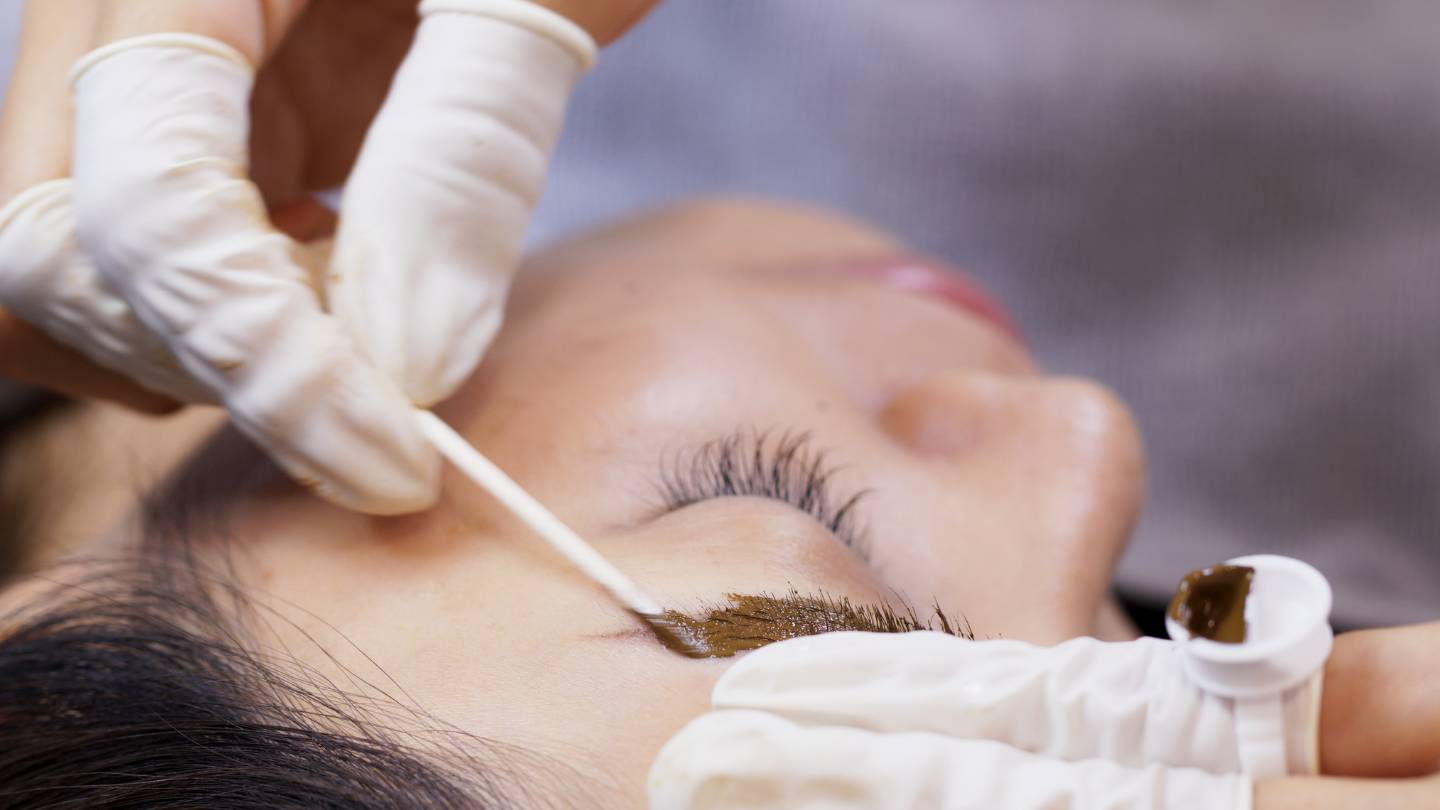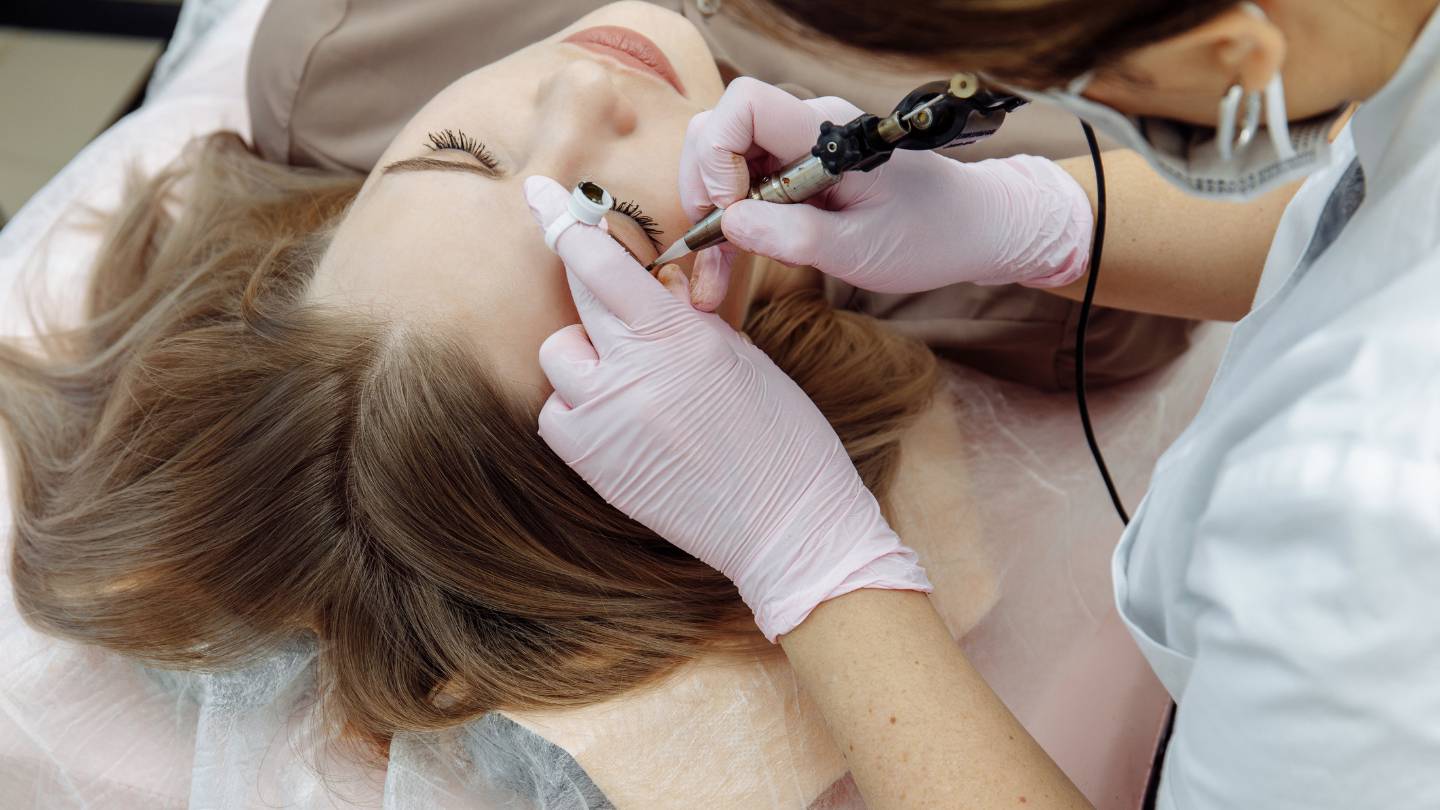Ombre powder brow tattoos and microblading are popular semi-permanent eyebrow techniques, but they differ in application and results. Ombre powder brows involve a machine to create a soft, shaded gradient effect, starting lighter in the front and progressively darker in the rear, mimicking the look of powdered makeup.
In contrast, microblading uses a handheld tool with fine needles to create hair-like strokes for a more natural, feathery appearance. Ombre powder brows tend to have a fuller, more defined look, while microblading offers a softer, more delicate result.
Additionally, ombre brows generally last longer and suit most skin types, whereas microblading may fade quickly on oily skin.
Let’s get straight to the point.
Ombre powder brows and microblading are popular semi-permanent eyebrow enhancement techniques with different applications and results. A machine produces ombre powder eyebrows with a gradient, makeup-like effect. They are suitable for all skin types and last 2-5 years.
Microblading uses a handheld tool to create hair-like strokes, providing a more natural, feathery look but may fade faster, especially on oily skin, lasting 1-2 years.
Both require a six-week healing process and touch-ups, but ombre brows last longer and are ideal for those seeking a bold, defined brow. Microblading is better for a natural, subtle appearance.
Microblading Vs. Ombre Powder Brows: A Detailed Comparison
Both microblading and Ombre Powder Brows offer effective solutions to enhance eyebrow appearance, but they differ in technique, application, and suitability. Below is a detailed comparison:
1. Technique And Application
- Microblading: This method uses a handheld tool with fine needles to create individual, hair-like strokes by depositing pigment into the upper layers of the skin. Each stroke mimics natural brow hairs, making it ideal for filling sparse areas while achieving a natural, realistic look. The technique requires precision and is perfect for people who desire a more subtle enhancement.
- Ombre Powder Brows: This technique uses a machine to deposit pigment more evenly across the brow, creating a soft, gradient effect. The front of the brow is lighter, while the tail is darker, giving the illusion of softly powdered or filled-in brows, similar to the look of makeup. Ombre Powder Brows offer a more defined and polished appearance.
2. Healing And Longevity
- Microblading: The healing process typically takes around six weeks. Due to the fine nature of the strokes, the pigment tends to fade faster, usually lasting between one and two years, depending on the individual’s skin type and aftercare. Frequent touch-ups may be required to maintain the crisp look of the hair-like strokes, particularly as the pigment fades over time.
- Ombre Powder Brows: The healing period is also approximately six weeks, but the technique involves depositing pigment deeper into the skin, extending the longevity of the results. Compared to microblading, ombre powder brows can last two to three years with fewer touch-ups, making them a longer-lasting option for many.
3. Skin Type Suitability
- Microblading is best suited for normal to dry skin types. People with oily skin may find that the delicate strokes blur or fade more quickly due to excess oil production, which can affect the clarity and longevity of the results.
- Ombre Powder Brows are suitable for all skin types, including oily, sensitive, and mature skin. The application process is less invasive than microblading, making it a more versatile option for a broader range of clients, especially those with problematic skin.
4. Desired Outcome
- Microblading is perfect for those seeking a natural, hair-like appearance. It is the go-to choice for subtle enhancement and a realistic finish, closely mimicking eyebrow hairs.
- Ombre Powder Brows are ideal for those who prefer a dramatic, makeup-like finish. The defined gradient effect appeals to individuals who desire bolder brows with a polished, filled-in look.
Pros And Cons Of Microblading
Pros
- Natural Appearance: Microblading creates fine, hair-like strokes that mimic real eyebrow hairs for a subtle, natural look.
- Time-Saving: Eliminates the need for daily eyebrow makeup, making it a practical choice for people with hectic schedules.
- Long-Lasting: Results can last up to three years, depending on skin type and lifestyle.
- Painless: Most clients experience minimal discomfort during the procedure thanks to numbing creams.
- Boosts Confidence: Fuller, well-defined brows can enhance facial aesthetics and boost self-esteem.
Cons
- Allergic Reactions and Infections: Rarely pigment-related allergies or infections may occur if aftercare guidelines are not followed.
- Lengthy Healing Process: The healing process can take up to a month, during which proper aftercare is essential.
- Not Suitable for Everyone: Microblading is not recommended for people with certain skin conditions, pregnant women, or individuals with hypersensitive skin.
- Maintenance Required: Touch-ups are necessary to maintain the desired appearance, especially for individuals with oily skin.
- Cost: The initial procedure can be expensive, based on the technician’s experience and geographic region.
Pros And Cons Of Ombre Powder Brows
Pros
- Long-Lasting Results: Ombre Powder Brows can last one to three years, making them a cost-effective option for long-term eyebrow enhancement.
- Soft, Natural Appearance: This technique creates a soft, powdery look that mimics makeup, giving a natural yet defined appearance.
- Time-Saving: Once healed, these Brows are easy to maintain, which makes them perfect for people with hectic lifestyles.
- All Skin Types Are Acceptable: Unlike microblading, which may not work well for oily or mature skin, Ombre Powder Brows are suitable for almost all skin types.
- Customisable: The intensity and the shape can be tailored to each preference.
Cons
- Initial Discomfort: Some clients may experience slight discomfort during the procedure, although numbing agents are used to minimise pain.
- Healing Process: Like microblading, Ombre Powder Brows require careful aftercare to ensure optimal results.
- Cost: Compared to traditional methods, the procedure may be more costly eyebrow grooming methods, but the long-lasting results may justify the investment.
- Limited Customisation: While Ombre Powder Brows offer customisation, they may not achieve the ultra-realistic hair-like strokes microblading provides.
- Maintenance Required: Although long-lasting, touch-ups are needed every 12 to 18 months to keep the ideal appearance.
What Is Microblading?
A semi-permanent cosmetic procedure called microblading was created to create fuller eyebrows. It involves using a portable device with small needles to apply pigment to the skin’s outer layers, mimicking natural eyebrow hairs. Due to its dimensional effect, this method is often called 3D or 6D microblading.
Ideal Candidates For Microblading
Microblading is suitable for people with sparse, patchy, or non-existent eyebrows. It’s especially beneficial for individuals relying on daily eyebrow makeup or those affected by alopecia. While it works best on normal to dry skin types, oily skin types can also use it, although the results may not last as long.
Microblading Procedure
The microblading process typically takes 1.5 to 2 hours, including consultation and application. The procedure involves the following steps:
- Cleaning the eyebrow area.
- Applying numbing cream to reduce discomfort.
- Selecting and preparing the pigment.
- Drawing each stroke meticulously by hand.
- A follow-up session is usually scheduled to adjust the shape or fill gaps.
What Are Ombre Powder Brows?
Ombre Powder Brows differ from traditional eyebrow tattooing in that they use a machine to deposit pigment into the skin. This creates a gradient effect, with the front of the brow appearing lighter and the tail gradually becoming darker. This method is less invasive than microblading, rendering a greater variety of skin types compatible, including oily or mature.
Advantages Of Ombre Powder Brows
- Longevity: Ombre Powder Brows typically last two to five years, requiring minimal maintenance and touch-ups.
- Less Painful: Many clients report that this procedure is less painful than microblading due to its less invasive nature.
- Suitable for Oily Skin: Unlike microblading, which may not yield long-lasting results on oily skin, Ombre Powder Brows are a more effective option for individuals with this skin type.
Ideal Candidates For Ombre Powder Brows
Ombre Powder Brows are recommended for individuals with oily skin, who have previously experienced fading or blurring with microblading, and anyone looking for a more defined, dramatic eyebrow shape. This technique is also suitable for covering up old permanent makeup or for people with untouched brows seeking a subtle enhancement.
Conclusion
Microblading and Ombre Powder Brows are excellent options for individuals looking to enhance the appearance of their eyebrows. These techniques depend on your skin type, desired aesthetic, and willingness to commit to aftercare and maintenance.
Microblading offers a natural, hair-like finish, while Ombre Powder Brows provides a bolder, makeup-inspired look. Consider your preferences and consult a trained professional to determine the best option for your eyebrow enhancement journey.
Frequently Asked Questions
What Is The Main Difference Between Ombre Powder Brows And Microblading?
Ombre Powder Brows use a machine to create a soft, gradient effect that mimics powdered makeup. At the same time, microblading involves a handheld tool to create hair-like strokes for a more natural, feathery appearance.
Which Technique Lasts Longer, Namely, Ombre Powder Brows Or Microblading?
Ombre Powder Brows generally last longer, about 2-5 years, compared to microblading, which lasts 1-2 years, especially for those with oily skin.
What Skin Types Are Best Suited For Microblading Vs. Ombre Powder Brows?
Microblading works best for normal to dry skin, while Ombre Powder Brows are suitable for all skin types, including oily, sensitive, and mature skin.
Is The Healing Process Different For Microblading And Ombre Powder Brows?
Both techniques have a similar healing process, which takes about six weeks, but ombre powder brows may require fewer touch-ups over time due to deeper pigment deposition.
Which Technique Should I Choose If I Want A Bold, Defined Brow Look?
Ombre Powder Brows are ideal for a bold, makeup-like finish while microblading suits those seeking a softer, more natural look.



